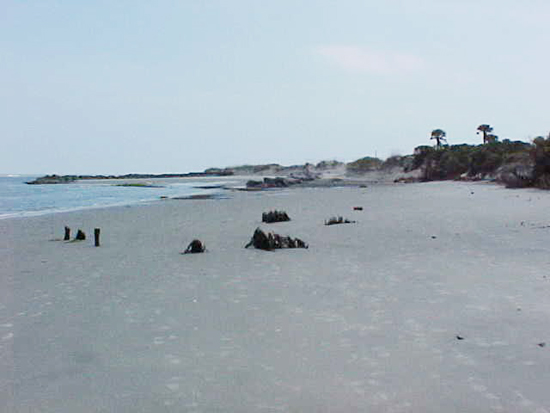 |
| Site |
| South Carolina Department of Archives and History |
| National Register Properties in South Carolina Folly North Site, Charleston County (Address Restricted) |
 |
| Site |
(Little Folly Island) The Folly North Site is significant as an intact portion of the batteries and fortifications built as part of the Union effort to capture Charleston during the Civil War. The site contains the extant remains of two Civil War artillery batteries and artifacts associated with eight other batteries and Fort Green, which have likely eroded into the Atlantic Ocean over time. Archaeological excavations have revealed the remains of fortifications and remarkably preserved artifacts such as faunal bone, wood, and cloth, as well as numerous other features associated with daily military life on the island. Confederate forces held this 75-acre tract from the beginning of the Civil War to the spring of 1863, but Federal forces occupied it for the remainder of the war. After the unsuccessful Federal naval bombardment of Fort Sumter on 7 April 1863 an infantry brigade occupied the island, began cutting roads for access, and began constructing field fortifications. As early as May 1863, Union forces prepared to attack Morris Island with about 4,000 men, sixteen heavy guns, and nine field guns. On the morning of July 10th the Federals launched an attack against Battery (or Fort) Wagner, on the northern end of Morris Island, after bombarding the Confederate position with approximately 2,500 rounds from the masked batteries on Folly Island. The Confederates easily repulsed the assault and inflicted heavy casualties. A few days later, in the better known battle at Battery Wagner on July 18th, the result was much the same. The 54th Massachusetts Volunteer Infantry (Colored), led by Colonel Robert Gould Shaw, won considerable acclaim for its bravery in this action. Listed in the National Register October 2, 2003.
View the complete text of the nomination form for this National Register property.
Most National Register properties are privately owned and are not open to the public. The privacy of owners should be respected. Not all properties retain the same integrity as when originally documented and listed in the National Register due to changes and modifications over time.
Images and texts on these pages are intended for research or educational use. Please read our statement on use and reproduction for further information on how to obtain a photocopy or how to cite an item.
Images provided by the
South Carolina Department of Archives and History.